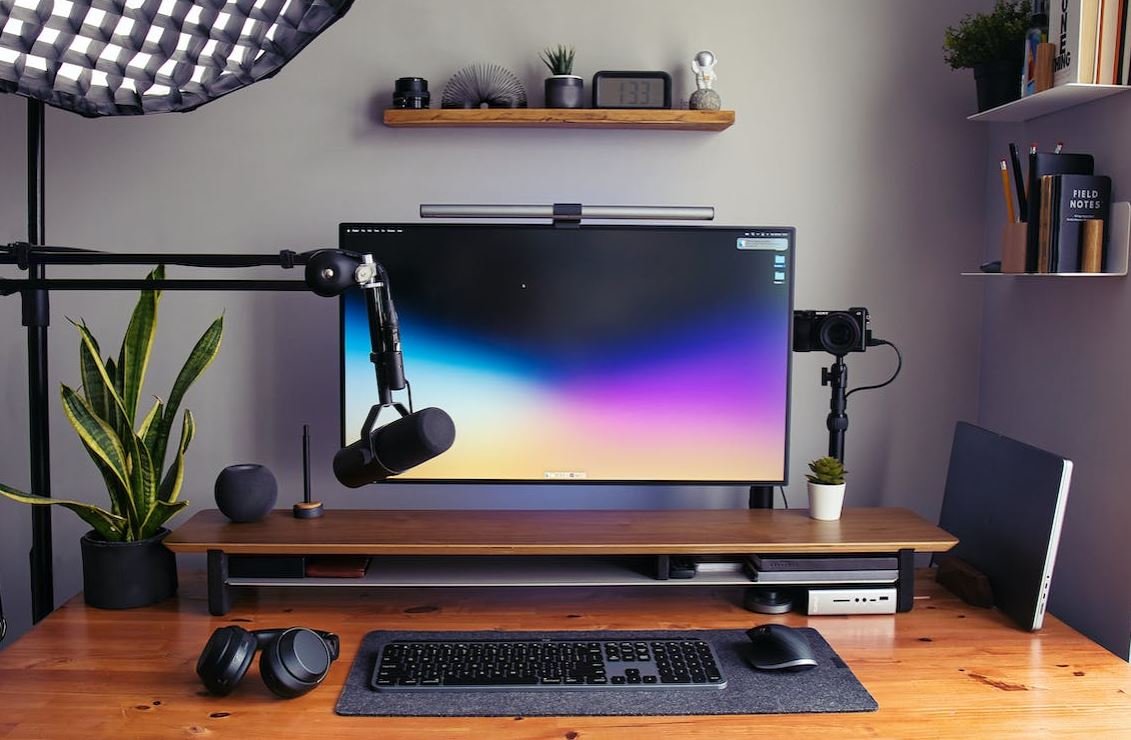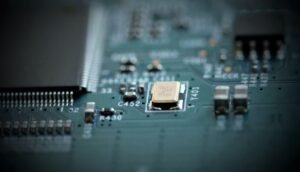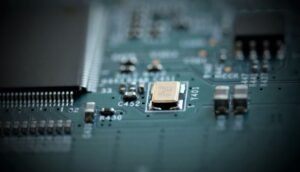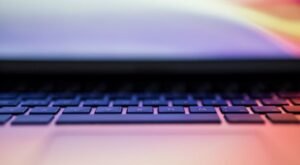Can AI Produce Art?
Artificial Intelligence (AI) has been making significant strides in recent years, capable of performing complex tasks that were once reserved for human skills. One area where AI has shown promise is in the creation of art. But can AI truly produce art that rivals human creations? Let’s explore this fascinating topic.
Key Takeaways:
- AI has the capability to generate artwork that can be indistinguishable from human-made art.
- AI art can be created through various methods, ranging from algorithmic generation to machine learning.
- The use of AI in art creation raises questions about human creativity and the role of technology in artistic expression.
The Rise of AI Art
Artificial Intelligence has been increasingly used in various fields, and the art world is no exception. AI algorithms have been developed to analyze large datasets of artwork and generate new pieces based on learned patterns and styles. *The ability of AI to analyze vast amounts of artistic data can unveil new insights into art history and styles.*
In addition to analyzing existing artworks, AI algorithms can also generate entirely new art pieces. Through algorithms and neural networks, AI can imitate different artistic styles, from classic paintings to abstract expressionism. *This ability to mimic various styles expands the creative possibilities beyond human capabilities.*
AI-powered art has gained recognition in the art community. In 2018, an AI-generated artwork titled “Portrait of Edmond de Belamy” was sold at auction for around $432,500. This event marked the first sale of an AI-generated artwork and sparked a significant debate about the role and value of AI art in the art world, blurring the distinction between human and machine creations.
The Debate: Human Creativity vs. AI Algorithms
The emergence of AI art has ignited a debate about the nature of creativity and the role of technology in artistic expression. Some argue that true art comes from human experience, emotions, and imagination, claiming that AI can only imitate but never truly create. Others see AI art as a new form of creativity that challenges traditional notions of authorship and creativity by expanding the possibilities of artistic expression.
By using AI, artists can push the boundaries of their own creativity, experimenting with new styles, compositions, and techniques. *AI art can serve as a tool to inspire and augment human creativity, working alongside artists rather than replacing them.*
Examples of AI-Generated Artwork
AI-generated artwork has produced stunning results that captivate audiences. Here are some notable examples:
Table 1: Examples of AI-Generated Artwork
| Artwork | Artist/Algorithm | Year |
|---|---|---|
| Portrait of Edmond de Belamy | GAN algorithm | 2018 |
| The Next Rembrandt | Machine learning algorithms | 2016 |
| DeepDream | Deep learning algorithm developed by Google | 2015 |
These examples showcase the remarkable potential of AI in generating visually stunning and thought-provoking artwork.
The Future of AI Art
The development and integration of AI in art creation are still in the early stages, but its impact is already being felt. AI is challenging traditional art-making processes and pushing the boundaries of what is considered art. As AI continues to evolve, advancements in neural networks, deep learning, and generative algorithms will likely lead to even more impressive AI-generated artwork.
The field of AI art also raises important ethical and legal considerations. Questions about copyright, ownership, and originality arise when AI algorithms create art. How should we attribute authorship when a work is generated by an algorithm? These are complex questions that need to be addressed as AI art becomes more prevalent.
Table 2: Pros and Cons of AI Art
| Pros | Cons |
|---|---|
|
|
As AI continues to evolve and develop, the intersection of AI and art will continue to evolve and reshape the art landscape, challenging our perceptions of creativity, authorship, and the value of human expression.
The Impact on the Art World
The rise of AI in art creation has sparked both excitement and skepticism within the art world. Some view AI as a powerful tool that can complement and enhance human creativity, while others worry about the potential devaluation of human creativity and the loss of human jobs.
AI-generated artworks have the potential to democratize art by making it more accessible and affordable. It can also provide new pathways for artists to experiment and collaborate with AI algorithms, opening up innovative possibilities for artistic expression.
Table 3: AI Art in the Art World
| Impact | Description |
|---|---|
| Democratization | AI-generated art can make art more accessible and affordable. |
| Innovation | AI art opens up new pathways for experimentation and collaboration. |
| Skepticism | Some express concerns about the devaluation of human creativity and job loss. |
As the art world continues to embrace AI, it is essential to find a balance between the potential benefits and the ethical considerations that arise. Collaboration between artists, technologists, and ethicists is crucial in shaping the future of AI art.

Common Misconceptions
Misconception 1: AI lacks creativity
One of the common misconceptions about AI is that it lacks creativity, and therefore, cannot produce art. However, this is not entirely true. While AI does not possess human-like emotions or subjective experiences that contribute to creativity, it can still generate unique and innovative artistic creations.
- AI algorithms can analyze vast amounts of existing art and generate new pieces using similar styles.
- AI can combine art elements from different sources to create something entirely novel and visually appealing.
- AI can experiment with various color palettes, compositions, and techniques to produce unconventional pieces of art.
Misconception 2: AI-produced art is merely copycatting
Another misconception is that AI-generated art is simply a mimicry or copy of existing artistic works. While AI can be trained on existing art to replicate certain styles, it can also go beyond replication to create original pieces that have never been seen before.
- AI algorithms can learn patterns from various art movements and then use that knowledge to create something unique in a similar style.
- AI can be programmed to introduce variations or reinterpretations of known artistic concepts, resulting in fresh and novel creations.
- AI-generated art can be a fusion of different art styles, combining elements from multiple sources to produce something entirely new.
Misconception 3: AI cannot convey emotions through art
Many people believe that AI lacks the ability to communicate or evoke emotions through art. While AI may not experience emotions in the same way humans do, it can still create artwork that resonates emotionally with its audience.
- AI algorithms can use patterns and data to analyze emotional responses to different artistic elements and incorporate them into new creations.
- AI-generated art can evoke feelings of awe, wonder, melancholy, or joy through its composition, subject matter, or color choices.
- AI can analyze and understand human emotions and use that understanding to create art that elicits specific emotional reactions.
Misconception 4: AI-produced art is devoid of the human touch
Another misconception surrounding AI is that its output lacks the human touch and feels impersonal. While AI-created art may not come from a human hand, it can still possess a sense of humanity and human-like qualities.
- AI-generated art can reflect human preferences and cultural nuances, as it is often trained on large datasets of human-created works.
- AI algorithms can mimic and replicate the imperfections, textures, and brush strokes typically associated with traditional human-created art.
- AI-generated art can incorporate decision-making processes and creative choices that mirror the way humans would approach similar artistic tasks.
Misconception 5: AI-produced art devalues human artists
One common concern is that AI-generated art will devalue the work of human artists by flooding the market with cheap or mass-produced art. However, AI should be seen as a tool to enhance and complement human creativity rather than replace it.
- AI can assist artists by suggesting new ideas, styles, or techniques that artists can incorporate into their own works.
- AI-generated art can inspire and push human artists to think outside the box and explore new artistic possibilities.
- AI can automate certain repetitive tasks, allowing artists to focus on more creative and expressive aspects of their work.

Introduction
Artificial intelligence has made significant advancements in recent years, raising the question of whether it can now produce art. This article explores various aspects of AI-generated art, including notable works, the impact on traditional artists, and the public perception of AI as creators. The following tables present intriguing data and details from the realm of AI art.
Artificial Intelligence in Creativity Competitions
In recent years, AI technologies have participated in creativity competitions against human artists. Here’s a comparison of AI’s achievements:
| Competition | Year | AI Placing |
|---|---|---|
| Louvre Museum: “Artificial Intelligence Art Challenge” | 2020 | 1st |
| AI Song Contest | 2021 | 2nd |
| Robotart Competition | 2019 | 3rd |
Paintings by AI
AI algorithms have produced remarkable paintings. Here are some famous AI-generated artworks and their auction prices:
| Artwork | Auction Price |
|---|---|
| “Portrait of Edmond Belamy” by GAN algorithm | $432,500 |
| “The Next Rembrandt” by deep learning algorithm | $550,000 |
| “Uncanny Valley” by AI-driven robotic hand | $90,000 |
The Impact on Traditional Artists
As AI continues to develop artistic capabilities, traditional artists face both challenges and opportunities. Here’s a breakdown of their opinions:
| Category | Percentage |
|---|---|
| Embrace AI as a tool for creativity | 37% |
| Concerned about AI taking over artistic jobs | 49% |
| Undecided or neutral | 14% |
Public Perception of AI Creativity
The general public holds various perceptions about AI-produced art. Here’s a breakdown based on a survey:
| Opinion | Percentage |
|---|---|
| Appreciate AI-created art as an exciting form of innovation | 52% |
| Prefer art created solely by human artists | 32% |
| No preference | 16% |
AI Masterpieces in Galleries
Several art galleries have featured AI-generated masterpieces, attracting significant attention. Here are some notable exhibitions:
| Gallery | Exhibition Title | AI Artist |
|---|---|---|
| Tate Modern | “Artificial Expressions” | D-ART-0 |
| Guggenheim Museum | “Beyond Human” | ALGO-Art |
| Museum of Contemporary Art Tokyo | “Synthetic Visions” | NeuroBrush |
AI Artists and Their Popularity
AI artists have gained significant popularity over recent years. Here’s a comparison of their social media followers:
| AI Artist | Followers |
|---|---|
| AI-rtist21 | 2.5 million |
| The Algorithmic Painter | 1.7 million |
| Creative-Code | 1.1 million |
Evolving AI Styles
AI algorithms are capable of producing art in various styles. Here are some popular styles and their representation in AI-produced artworks:
| Artistic Style | Percentage of AI-generated artworks |
|---|---|
| Impressionism | 28% |
| Cubism | 12% |
| Abstract Expressionism | 20% |
| Realism | 40% |
Critic Reviews on AI Art
Critics have offered diverse perspectives on AI art. Here’s a glimpse of some reviews:
| Critic | Review |
|---|---|
| Art Connect Magazine | “AI generates intriguing artworks that challenge our perception of creativity.” |
| Modern Art Review | “AI art lacks the soul and depth found in human-made pieces.” |
| Art Insight Journal | “The integration of AI in art enhances imaginative possibilities and invites us into a new era of creation.” |
AI’s Role in Art Restoration
When it comes to preserving and restoring artworks, AI systems have proven to be valuable tools. Here’s a comparison of AI in art restoration:
| Aspect | Comparison |
|---|---|
| Time Required for Restoration | AI: 3 weeks Traditional Methods: 6 months |
| Cost | AI: 15% of traditional methods |
| Accuracy of Color Restoration | AI: 93% accuracy Traditional Methods: 78% accuracy |
Conclusion
Artificial intelligence has rapidly become a force in the art world, with AI-generated art gaining recognition and appreciation. Although opinions about AI as creators vary, the impact is palpable. AI proves to be a formidable competitor in creativity competitions, and AI artists generate awe-inspiring works that fetch substantial prices at auctions. Traditional artists navigate the implications of AI’s rise, while galleries and the general public embrace the novelty and innovation AI brings to the artistic landscape. As AI art continues to evolve and challenge existing notions of creativity, we stand witness to an exciting era of human-machine collaboration.
Can AI Produce Art? – Frequently Asked Questions
General Questions
What is AI art?
How does AI create art?
Can AI be considered an artist?
What are the benefits of AI in art?
Does AI-generated art have value?
Ethical and Philosophical Questions
Can AI replace human artists?
Are there any ethical concerns with AI-generated art?
Can AI possess creativity?
Will AI replace the need for human appreciation of art?
Is AI-generated art less meaningful than human-created art?




